北京昌平五层中学教学楼设计(建筑图结构图)
无需注册登录,支付后按照提示操作即可获取该资料.
北京昌平五层中学教学楼设计(建筑图结构图)(任务书,开题报告,论文计算书18000字,建筑图14张,结构图7张)
摘要
本毕业设计为北京昌平第一中学框架楼设计。本建筑为五层,各层的层高 3.9m。采用的是全现浇钢筋混凝土框架结构,基础场地类别为Ⅱ类,结构的抗震设计按七度抗震设防进行。
楼梯形式采用整体板式楼梯。楼面板和屋面板全按整体双向板的弹性理论进行计算。框架在竖向荷载下的内力计算采用分层法,其中活载按满布计算,不考虑活载的最不利布置。水平荷载如风、地震等的内力计算采用 D 值法。A,D 轴柱下采用独立基础,而B,C 轴柱下则采用联合基础。
关键词:框架结构;分层法;D 值法;内力组合;截面设计
Abstract
This graduation projectis the buildingdesign of The NO.1 middle school in Beijing Changping . The construction of it is five, all the floors building store height 3.9m. Useing cast-in-place reinforced concrete portal frame construction, this kind of the foundation location category isⅡ, calculatingon the structure according to seven degrees fortifications the earthquake resistance design.
The staircase form uses the entireplate staircase. Both the floorboard and the roofing board press the bidirectional board with the theory of elasticity computation. The frame uses the delamination when vertical load endogenic force computation, in which live load endogenic force computation the full cover, does not consider its most disadvantageous arrangement. The horizontal load like the wind, the earthquake and so on endogenic force computation use the D value method. The foundation under Aand D columella uses the independent basis, and the foundation under B and C columella uses the unionbasis.
Key words: The frame structure,the delamination, the D value law, the internal force combination, Matches the steel bar.
1.1 工程概况
一、建设地点
北京昌平第一中学教学楼,占地规则:50×20m。
二、内容:
1.五层框架结构
2.建筑功能等具体要求参见详细规定
办公楼:
公共部分:卫生间、(开水间))、楼梯(电梯),需设小型会议室、打字室、大会议室
底层增设:大厅、收发传达室、接待室综合楼:下面4层办公,其上为公寓
教学楼:大小教室、大厅、卫生间
三、气象资料:
1.最热月的平均温度30℃、极端最高温度为40℃ ;最冷月的平均温度-4 ℃,极端最低温度-13 ℃ 。
2.年平均降雨量:450mm,雨量集中在 7 月中旬至 8 月中旬
3.全年的主导风向:东北风
四、工程地质资料:
1.拟建区地形平坦,自然地表标高为34.5m,Ⅱ类场地土。
2.根据勘察单位的勘察报告,场地范围内地质构成,自地表向下依次为:
杂填土:厚度0.3~0.5米
粘土:厚度 5.5~8 米,褐色强风化至中风化砂岩,未揭穿,暗红色,
3.实测最高地下水位的标高为29m,水质为无侵蚀性
4.本地区地震烈度为7 度(近震)),场地类别为Ⅱ类场地。
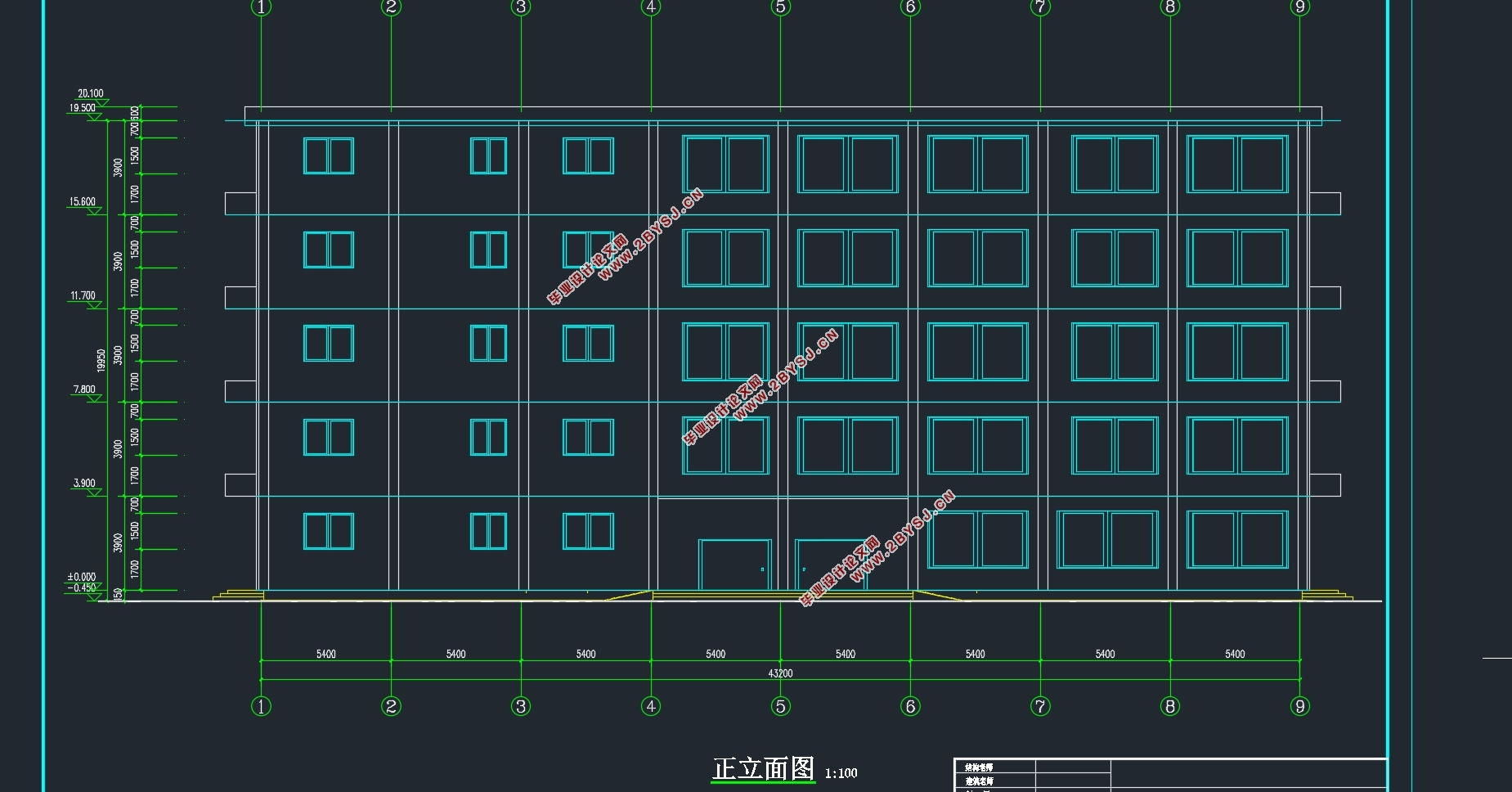
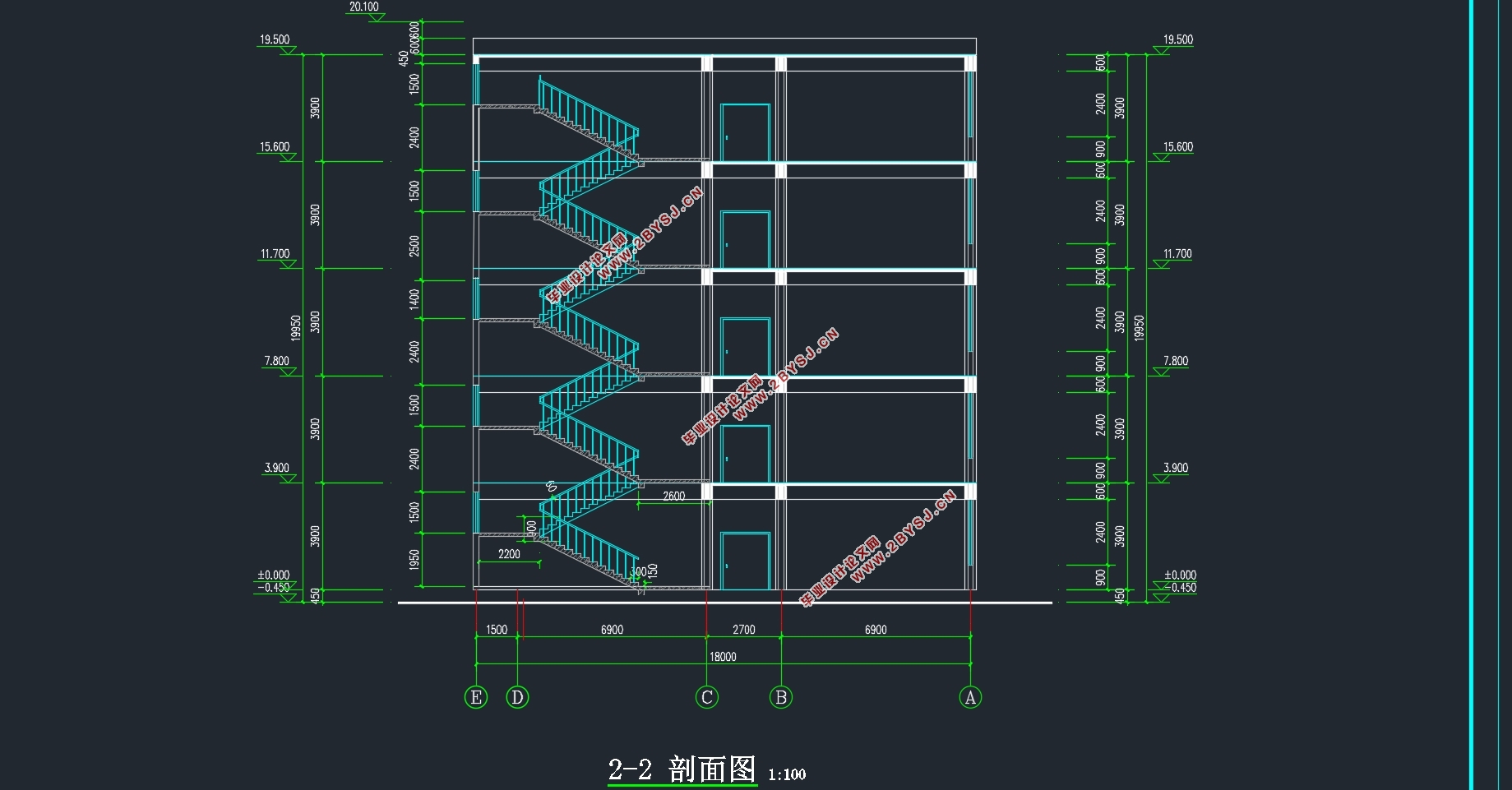
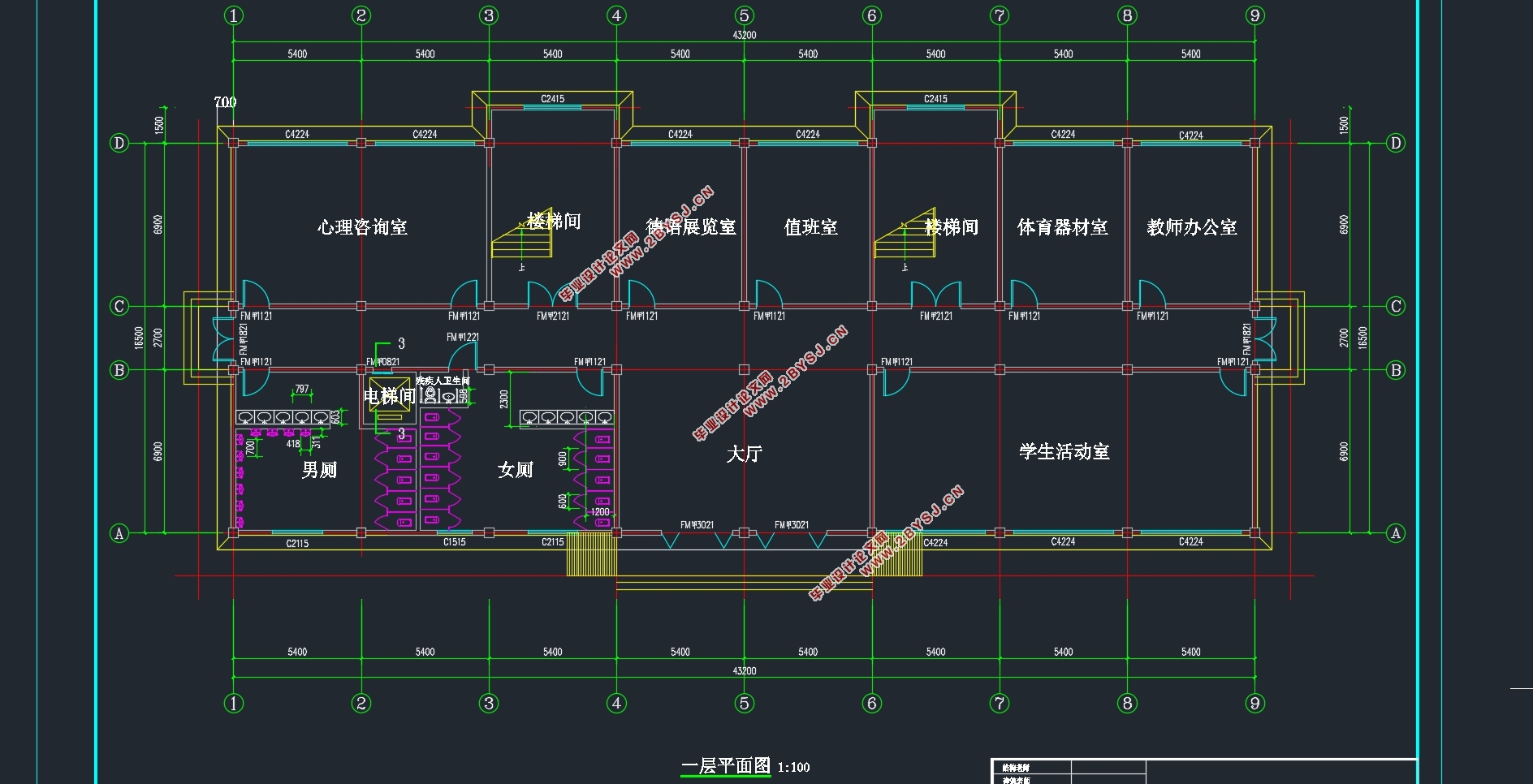

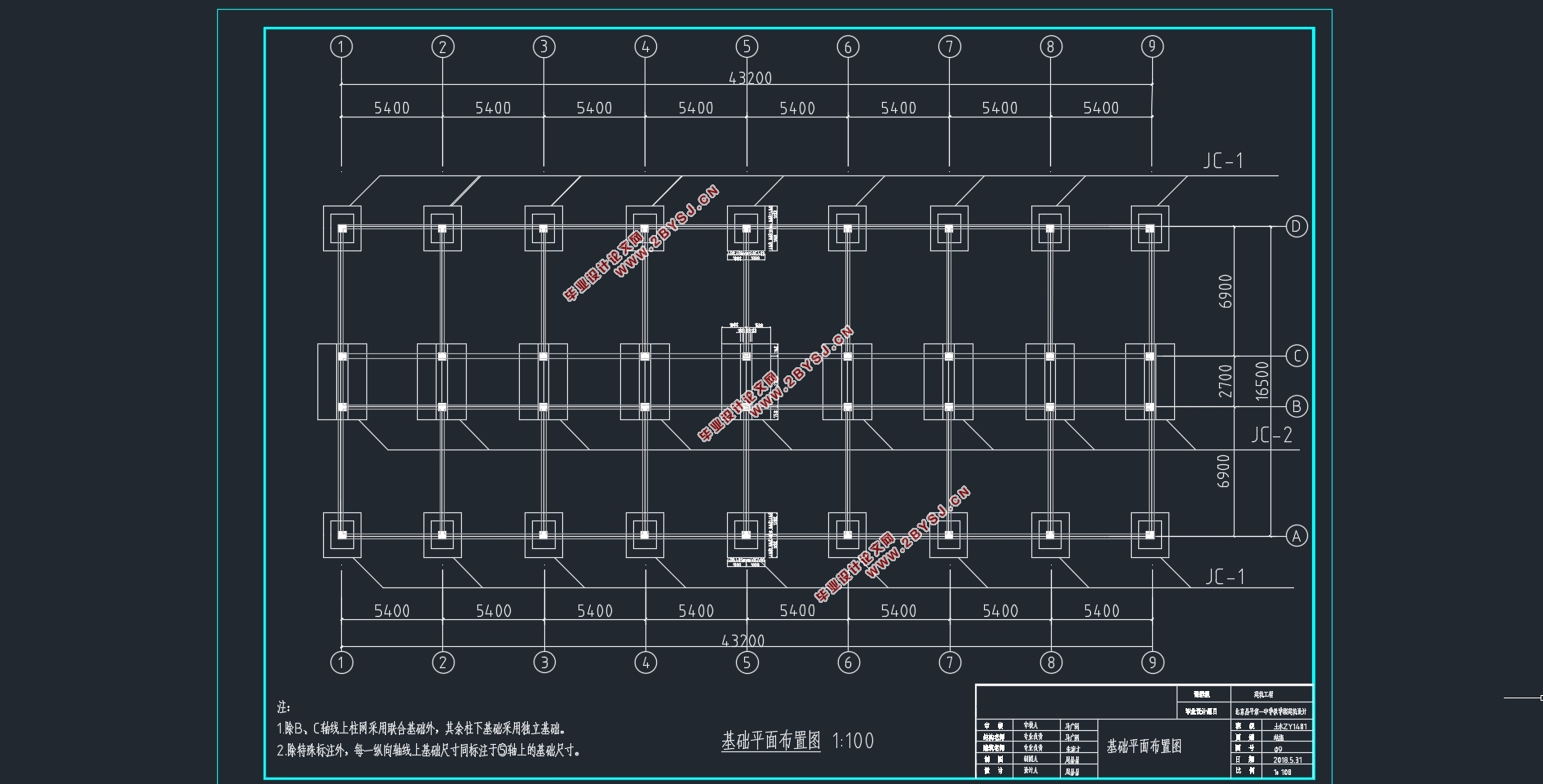
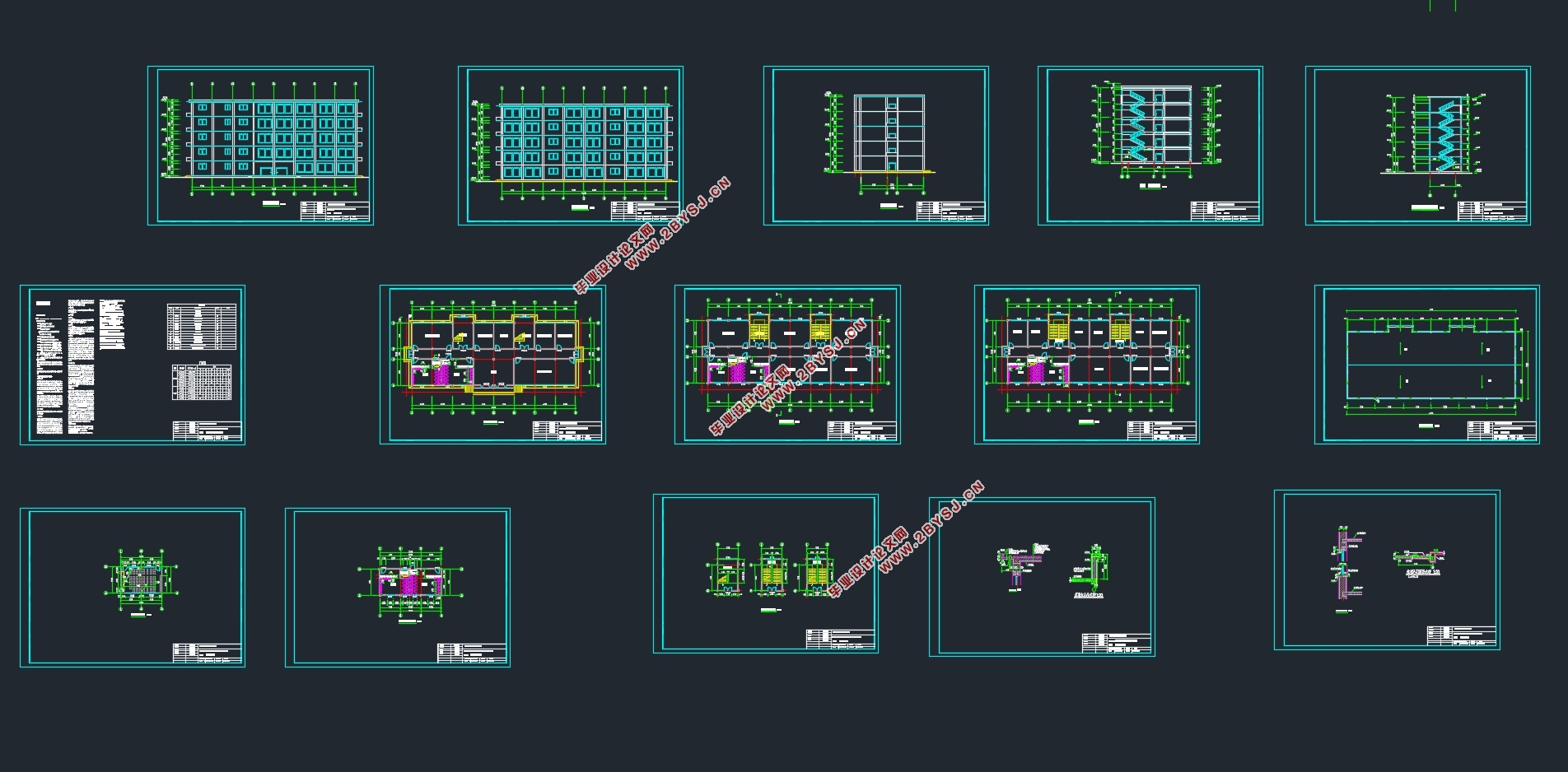

目录
摘要 1
Abstract 2
绪论 3
1 框架计算 4
1.1 工程概况 4
1.2 确定计算模型 4
1.2.1 预设截面尺寸 4
1.2.2 计算模型 5
1.3 荷载计算 6
1.3.1 恒载标准值计算 6
1.3.2 活荷载标准值计算 8
1.4 确定竖向受荷总图 8
1.4.1 A-B,C-D轴线间框架梁 9
1.4.2 B-C 轴线间框架梁 9
1.4.2 A,D轴柱纵向集中荷载计算 10
1.4.3 B,C轴柱纵向集中荷载计算 11
1.5 风荷载计算 13
1.5.1 风荷载标准值计算 13
1.5.2 风荷载作用下的位移验算 14
1.6地震荷载计算 15
1.6.1 各层重力荷载代表值计算 15
1.6.2 地震力计算 16
1.6.3 地震作用下结构侧移计算 17
1.7内力计算 19
1.7.1 恒荷载标准值作用下的内力 19
1.7.2 活荷载标准值作用下的内力 25
1.7.3 风荷载作用下内力计算 33
1.7.4 地震作用下内力计算 37
1.8 内力组合 41
1.8.1 组合方法 41
1.8.1 梁内力组合 42
1.8.3柱内力组合 51
1.8.4 柱端弯矩设计值的调整 54
1.8.5 柱端剪力组合和设计值的调整 55
1.9 梁柱配筋计算 57
1.9.1 材料选择 57
1.9.2 梁配筋计算 57
1.9.3柱配筋计算 60
2 基础设计 65
2.1 设计资料 65
2.2 A轴柱下独立基础设计 65
2.2.1 材料选择 65
2.2.2 荷载设计值 65
2.2.3 初步确定基底尺寸 66
2.2.4 初步确定基底尺寸 68
2.2.5 配筋计算 69
2.3 B,C 柱下联合基础设计 72
2.3.1 材料选择 72
2.3.2 确定基础尺寸 72
2.3.3 梁的弯矩和剪力计算(采用倒梁法) 72
2.3.4 基础配筋计算: 73
3 整体式双向板肋梁屋盖设计 75
3.1 设计资料 75
3.2 荷载计算 75
3.2.1 屋面均布恒荷载计算: 75
3.2.2 活荷载计算 75
3.2.3 荷载合计 75
3.3 内力计算(按弹性理论计算) 75
3.4 配筋计算 78
4 整体式双向板肋梁楼盖设计 80
4.1 设计资料 80
4.2 荷载计算 80
4.2.1 楼面均布恒荷载计算 80
4.2.2 活荷载计算 80
4.2.3 荷载合计 80
4.3 内力计算(按弹性理论计算) 80
5 楼梯设计 84
5.1 设计资料 84
5.2 楼梯板设计 84
5.2.1 荷载计算 84
5.2.2截面设计 85
5.3 平台板设计 85
5.3.1 荷载计算 85
5.3.2 截面设计 86
5.4 平台梁计算 86
结论 88
谢辞 89
参考文献 90
